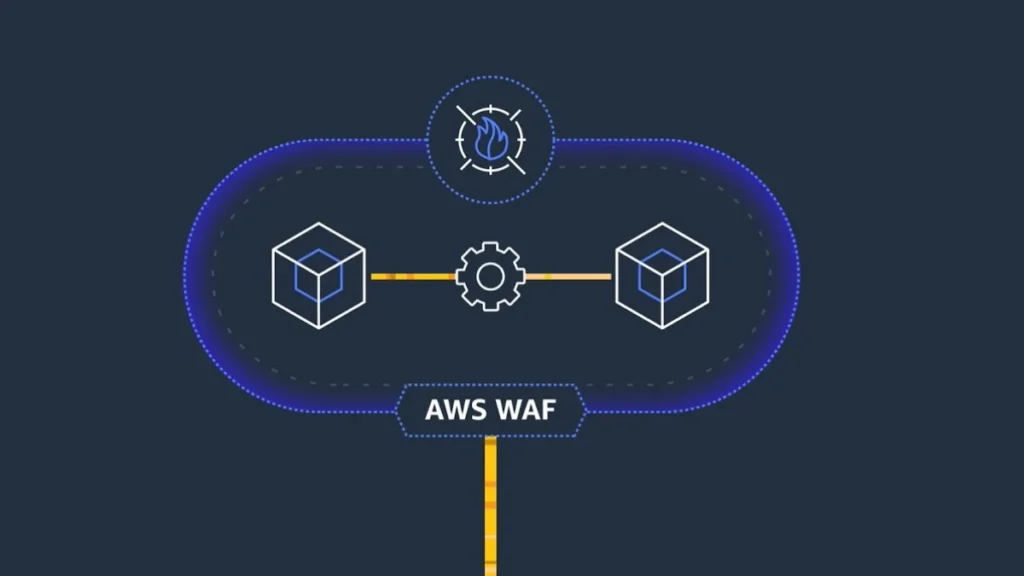As a DevOps engineer, you’re constantly looking for ways to balance rapid software delivery with rock-solid security. One crucial tool at your disposal is a Web Application Firewall (WAF). In the AWS ecosystem, that solution is AWS WAF—a service designed to protect your applications from common web exploits while giving you the flexibility and integrations essential to a modern DevOps workflow.

Why Does a DevOps Engineer Need AWS WAF?
DevOps isn’t just about automating CI/CD pipelines; it’s about creating a culture of speed, collaboration, and—just as importantly—security. AWS WAF for DevOps Engineers is particularly relevant here because:
- Proactive Defense: It shields your apps from malicious traffic at the application layer (Layer 7), blocking threats like SQL injections and cross-site scripting (XSS) before they reach your code.
- Seamless Integration: You can configure AWS WAF to work with services you’re already using—such as Amazon CloudFront, Application Load Balancer (ALB), and Amazon API Gateway. This means less friction when plugging security measures into your existing DevOps toolchain.
- Infrastructure as Code (IaC) Friendly: AWS WAF can be managed programmatically through AWS CloudFormation, AWS CDK, or Terraform. In practice, that means you can version-control your security policies alongside your application code.
How AWS WAF Works—A Simplified Look
- Connect to an AWS Service: First, associate AWS WAF with a front-end service—CloudFront, ALB, or API Gateway. Think of it as an extra security layer in your infrastructure.
- Rules Evaluation: Incoming requests are inspected based on criteria you define (e.g., IP addresses, request headers, URIs).
- Action Taken
- Allow: Legitimate requests proceed to your backend.
- Block: Known malicious traffic is denied.
- Count: Monitor suspicious traffic without immediately blocking it.
- Logging & Monitoring: You can export logs to Amazon Kinesis Data Firehose, Amazon S3, or Amazon CloudWatch for deeper analysis. This is critical for building security-focused metrics and alerts into your continuous monitoring pipeline.
Key Features Through a DevOps Lens
1. Traffic Control
AWS WAF’s traffic control lets you define rules at a granular level—blocking or allowing requests based on IPs, headers, URIs, or query strings. For DevOps teams, this means you can automate rule deployment using the same IaC tools you use for the rest of your infrastructure.
2. Rate Limiting
Rate-based rules let you throttle requests from a single IP if they exceed a specified threshold (e.g., 2,000 requests per 5 minutes). This mitigates DDoS or brute-force attacks while keeping your environment stable.
AWS WAF vs. Alternatives
Below is a quick comparison table to help DevOps teams understand how AWS WAF stacks up against some common alternatives:
| Feature | AWS WAF | Cloudflare WAF | ModSecurity | Imperva WAF |
|---|---|---|---|---|
| Ease of Use | Medium | Easy | Complex | Medium |
| Pricing | Pay-as-you-go | $20+/month | Free | Enterprise |
| Best For | AWS apps | CDN & DDoS | Custom setups | Enterprises |
| Integration | AWS native | CDN edge | Self-hosted | Enterprise-grade |
| Scalability | High | High | Custom | Very High |
- Cloudflare WAF: Great for global CDN coverage and easy setup, but may require DNS migration.
- ModSecurity: Open-source and highly customizable, but needs more hands-on management and hosting.
- Imperva WAF: Enterprise-grade with advanced capabilities; pricing is generally higher and suited for larger organizations.
When to Choose AWS WAF
- You’re “All-In” on AWS: If your team relies heavily on AWS services like CloudFront, ALB, or API Gateway, AWS WAF integrates seamlessly.
- You Need Flexible, Pay-As-You-Go Security: You pay based on the number of Web ACLs, rules, and requests you process—scaling up and down as needed.
- You Value DevOps Automation: You can automate AWS WAF rule deployment alongside your infrastructure code, ensuring consistency across dev, staging, and production.
- You Want Full Control Over Rules: If you need to customize rules down to the query-string level, AWS WAF’s configuration flexibility is a major plus.
Cost Breakdown: What You’ll Actually Pay
AWS WAF pricing generally has three components:
- Monthly Per-WebACL Fee: Typically around $5 per month for each Web ACL.
- Rules Charge: Each rule (standard or rate-based) in a Web ACL has a monthly charge. Managed rule groups (from AWS or third parties) may cost extra.
- Request Charges: You pay per million requests inspected by AWS WAF (often $0.60 per 1 million).
For a simplified example:
- 1 Web ACL: $5/month
- 5 rules (3 custom, 2 managed)
- 3 custom rules = $3/month
- 2 managed rule groups = $20/month (assuming $10 each)
- 10 million requests = $6/month (10 × $0.60)
That adds up to about $34/month. Actual costs may vary based on region and any third-party managed rules you use.
Conclusion
From a DevOps engineer’s perspective, AWS WAF for DevOps Engineers strikes a balance between flexibility, deep AWS integration, and a simple pay-as-you-go model. If your infrastructure already runs heavily in AWS, it’s likely the most straightforward way to add application-layer security without introducing unnecessary complexity. By integrating AWS WAF for DevOps Engineers rules into your Infrastructure as Code, you ensure consistent security policies across environments, proactively block malicious traffic, and maintain the agility DevOps teams need.